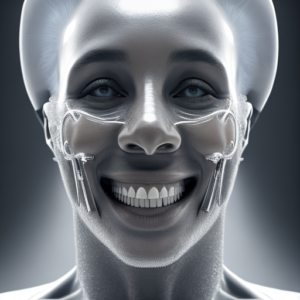Are you a dentist, dental hygienist, or healthcare professional concerned about the rising prevalence of osteoporosis? Many patients with osteoporosis don’t present with obvious skeletal symptoms until a major fracture occurs, often in the hip. Traditional methods like DEXA scans are gold standard but aren’t always readily accessible or affordable for everyone. Dental x-rays offer a surprisingly valuable and cost-effective tool to detect subtle bone loss that can be an early indicator of this debilitating condition – particularly when focusing on specific patterns. This comprehensive guide will explore how decoding bone density patterns in dental radiographs can significantly improve osteoporosis assessment, ultimately leading to better patient care.
Understanding Osteoporosis and Its Significance
Osteoporosis is a systemic skeletal disease characterized by decreased bone mineral density and microarchitectural deterioration of bone tissue. This makes bones weaker and more prone to fractures. The World Health Organization estimates that over 300 million people worldwide live with osteoporosis, and this number is projected to continue growing as populations age. A fracture resulting from osteoporosis can dramatically impact a person’s quality of life, leading to pain, reduced mobility, increased risk of falls, and potential long-term disability. Early detection and intervention are crucial in managing the disease and reducing the likelihood of severe complications.
The Limitations of Traditional Osteoporosis Diagnosis
Currently, the gold standard for diagnosing osteoporosis is a Dual-energy X-ray Absorptiometry (DEXA) scan. However, DEXA scans primarily assess bone density at the spine and hip, offering limited information about other potential fracture sites. Furthermore, access to DEXA scanners can be restricted by cost, geographic location, or insurance coverage. Some patients may also experience anxiety related to radiation exposure associated with DEXA scans. This gap in diagnostic capabilities highlights the need for alternative imaging methods that provide broader insights into skeletal health and are more accessible.
Dental X-Rays as a Window into Bone Loss
Dental x-rays, specifically panoramic and cephalometric radiographs, can surprisingly reveal subtle changes in bone density within the jaws – areas frequently affected by osteoporosis. Osteoporosis often manifests with trabecular thinning and cortical porosity, which are detectable on dental radiographs, even before significant vertebral fractures develop. The alveolar ridge (the bone supporting teeth) is particularly vulnerable to bone loss due to its close proximity to the spine and its reliance on vascular supply for nourishment. Analyzing these patterns can provide a valuable adjunct to traditional osteoporosis assessments.
Specific Bone Density Patterns Observed on Dental X-Rays
Several distinct radiographic patterns are commonly associated with osteoporosis when assessed through dental x-rays:
- Trabecular Thinning: This represents the loss of sponge-like bone structure within the jaws. It’s often one of the first signs detectable on radiographs.
- Cortical Porosity: Increased tiny holes and spaces in the outer layer (cortex) of the bone, weakening its structural integrity.
- Alveolar Ridge Recession: The downward movement of the alveolar ridge, exposing more root surface and increasing susceptibility to tooth mobility and loss. This is directly linked to bone density changes.
- Reduced Bone Area: A general decrease in the total volume of bone present in the jaws.
(Example Image – Replace with an actual dental x-ray image showing the patterns described above)
Step-by-Step Guide to Decoding Bone Density Patterns
Here’s a step-by-step guide for dentists and hygienists on how to interpret bone density patterns in dental radiographs:
- Image Acquisition: Obtain high-quality panoramic or cephalometric x-rays.
- Initial Assessment: Begin with a general assessment of the alveolar ridge, noting its height and width.
- Trabecular Analysis: Carefully examine the trabecular pattern in the maxilla (upper jaw) and mandible (lower jaw). Look for signs of thinning and fragmentation.
- Cortical Assessment: Evaluate the cortex for porosity – tiny holes or spaces within the bone.
- Measurements: Record key measurements, including alveolar ridge height, bone area, and trabecular dimensions. Comparing these measurements over time can reveal trends in bone loss.
- Correlation with Patient History: Consider the patient’s medical history, family history of osteoporosis, medications (e.g., corticosteroids), and lifestyle factors (e.g., calcium intake).
Case Study: Recognizing Osteoporosis in a Geriatric Patient
A 78-year-old male presented with complaints of jaw pain and tooth mobility. His panoramic x-ray revealed significant trabecular thinning and cortical porosity in the alveolar ridge. Further investigation revealed that he was taking prednisone for rheumatoid arthritis, a known risk factor for osteoporosis. Based on this combined information – the radiographic findings and his medical history – the dentist suspected osteoporosis and referred him to a DEXA scan, which confirmed the diagnosis. The initial dental x-ray findings allowed for early intervention, preventing potential complications like tooth loss and improving his overall well-being.
Integrating Dental X-Ray Assessment into Osteoporosis Management
Dental x-rays play a vital role in a holistic approach to osteoporosis management:
- Early Detection: They can identify bone loss before significant skeletal fractures occur.
- Risk Stratification: The patterns observed on radiographs can help stratify patients based on their fracture risk – particularly the risk of vertebral compression fractures.
- Treatment Monitoring: Dental x-rays can be used to monitor the effectiveness of osteoporosis treatments, such as calcium and vitamin D supplementation or bisphosphonates.
Comparison Table: DEXA vs. Dental X-Ray
| Feature | DEXA Scan | Dental X-Ray |
|---|---|---|
| Primary Focus | Spine and Hip Bone Density | Jawbone Bone Density (Alveolar Ridge) |
| Cost | Higher – Typically $100-$200+ | Lower – Typically $50-$150 |
| Requires Specialized Equipment and Trained Personnel | Readily Available in Most Dental Offices | |
| Information Provided | Overall Bone Density, Fracture Risk Scores | Localized Bone Loss Patterns, Alveolar Ridge Recession |
Key Takeaways
- Dental x-rays offer a valuable, accessible tool for detecting early signs of bone loss associated with osteoporosis.
- Recognizing specific radiographic patterns – trabecular thinning, cortical porosity, and alveolar ridge recession – can significantly improve patient diagnosis and risk stratification.
- Integrating dental x-ray assessment into a comprehensive osteoporosis management plan enhances overall care and potentially prevents severe complications.
Frequently Asked Questions (FAQs)
Q: Can dental x-rays definitively diagnose osteoporosis?
A: No, dental x-rays cannot definitively diagnose osteoporosis. They provide valuable information about bone density patterns that can suggest the presence of osteoporosis, but a DEXA scan is still needed for confirmation.
Q: What types of dental radiographs are most useful for assessing osteoporosis?
A: Panoramic and cephalometric radiographs are the most commonly used types of dental x-rays for evaluating bone density patterns related to osteoporosis.
Q: How often should I have my dental x-rays evaluated for osteoporosis risk?
A: The frequency depends on individual risk factors. Patients with a high risk of osteoporosis (e.g., older adults, those taking corticosteroids) may benefit from more frequent evaluations.
Q: Can dental x-ray findings influence treatment decisions?
A: Yes, dental x-ray findings can inform treatment decisions regarding tooth replacement, periodontal therapy, and overall oral health management in patients with osteoporosis.
Conclusion
The future of osteoporosis diagnosis may well involve a multi-modal approach, combining the strengths of dental x-rays with other imaging modalities and clinical assessments
















